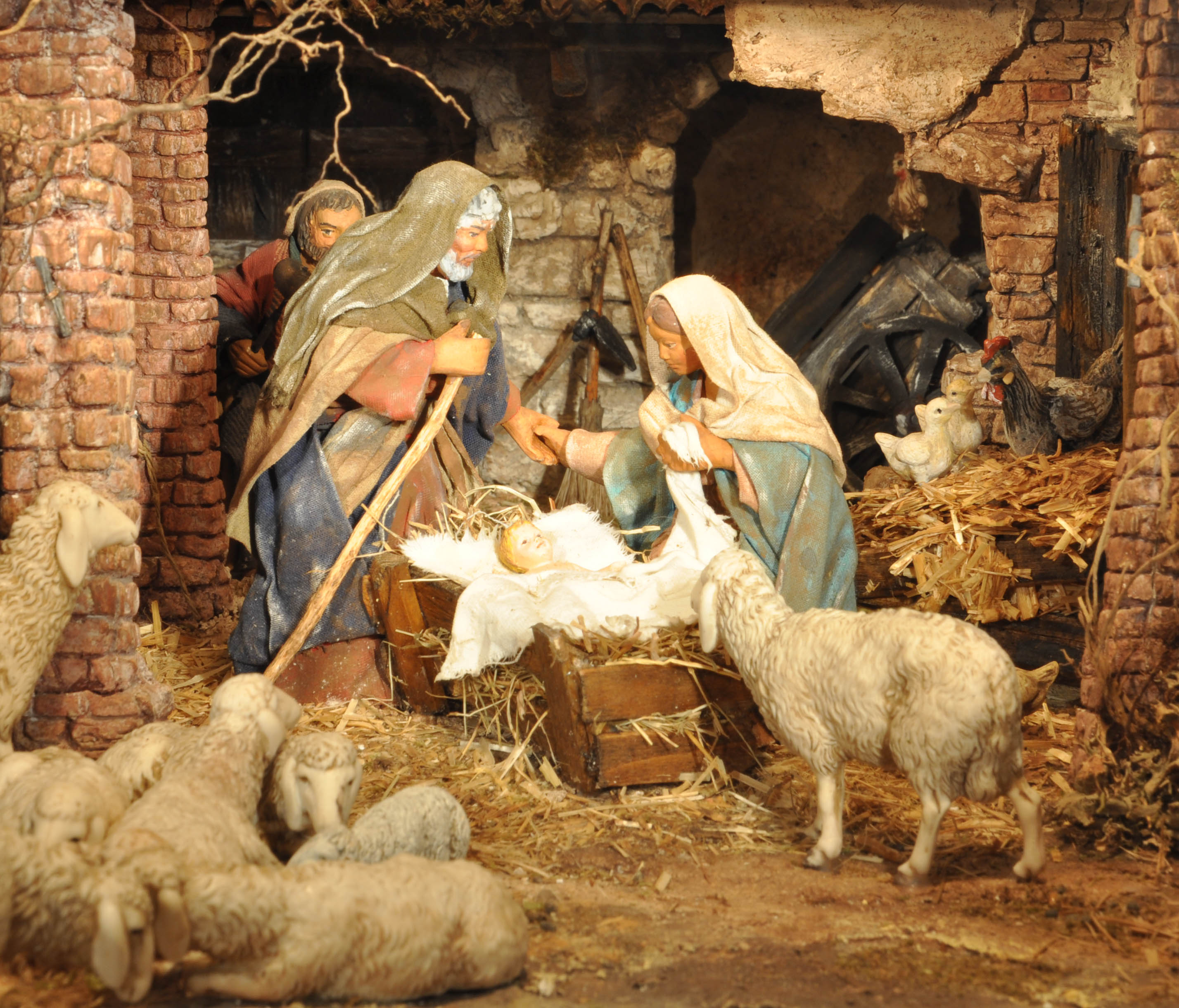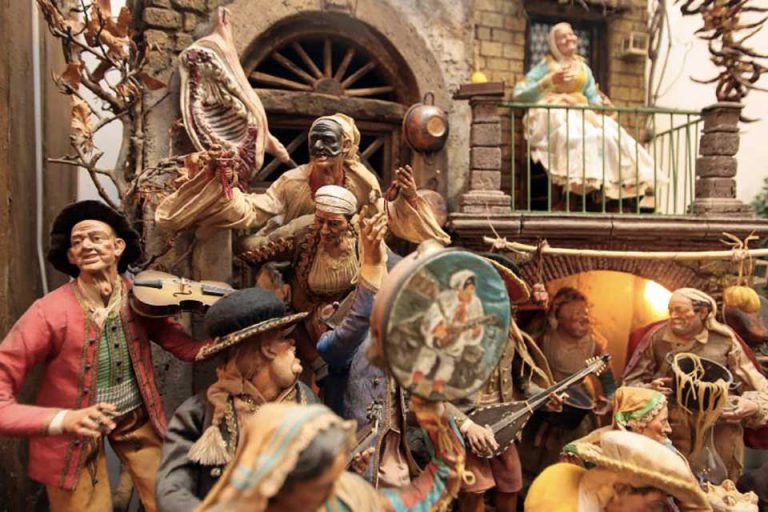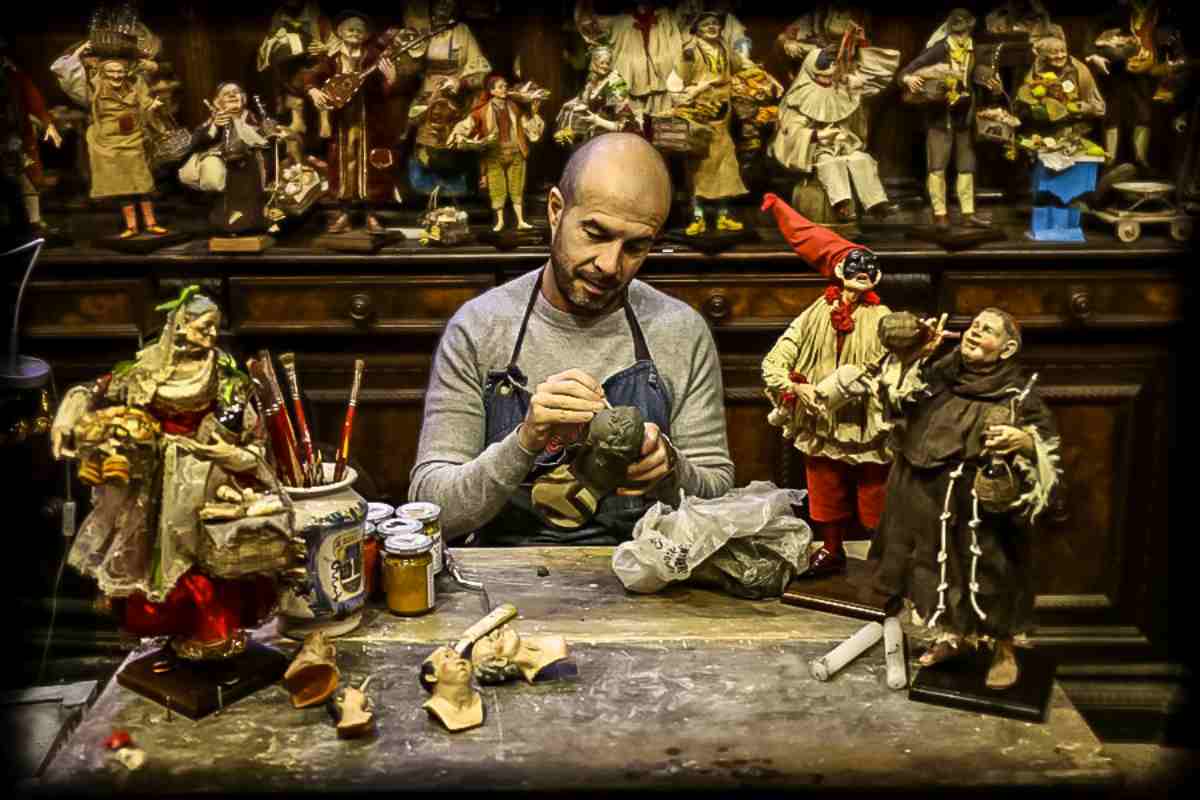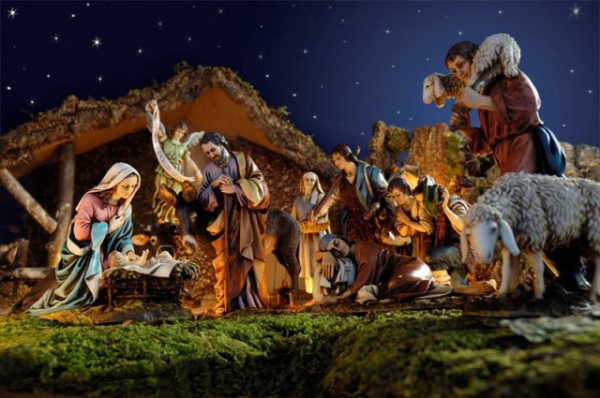Ever since I was a baby, the Nativity scene and the tree have been unfailing symbols of Christmas to me, able to warm the house and evoke the magic of the holiday season. I still remember how I used to watch my dad set up the Nativity scene in a corner of the house, with the figurines, the little houses and all the lights, and it still thrills me to this day!
So, let me share the history of “Presepe”, the Italian Nativity scene, with a special mention for one of Italy's most representative Nativity scenes, “Il Presepe Napoletano”.

The word "Presepe" originates from the Latin "praesepe" or "praesepes" and stands for "stable”, indicating the very stable in which, as reported in the Gospel of Luke, the child Jesus was placed at his birth.
The invention of the Nativity scene can be traced back to St. Francis, who, in 1223, asked the Pope for the possibility of having real people interpret the story of Jesus's birth.
The Nativity scene was first staged in the small village of Greccio, in the province of Rieti, not far from Rome, where St. Francis had founded a monastery (still inhabited by Franciscan friars these days). Francis had just returned from Bethlehem and wanted to celebrate Christmas, and that monastery looked very much like Bethlehem, so he placed an altar on a manger, had straw, a donkey and an ox brought, and then celebrated the Mass.
Since then, the Nativity scene has become part of the Christmas tradition (by the way, this year is the 800th anniversary of that event).
Initially, Nativity scenes were mainly staged in churches and sacred public places and, very soon, wooden or terracotta figures substituted real people. It was not until the mid-1400s that these representations also began to be found inside homes; wax and porcelain were used in addition to the traditional materials, and landscape elements were added. In the 1600s, the nativity scene also began to be represented in poorer people's houses, with less lavish figurines made with much simpler materials.
The history of the nativity scene is thus an ancient story, a tradition that has strengthened its value over time and that, from generation to generation, is still handed down and kept alive.
And, though the tradition of the Presepe is strong in all areas of Italy, there is one place where devotion combines with art, giving birth to true masterpieces: Naples.

The origin of the Nativity scene in Naples seems to go back to 1458 when Messer Alberico Miroballis commissioned the artist Martino de Simone de Jadena 11 wooden figures to embellish the Church of Sant'Agostino alla Zecca. Since then, the representation spread from churches to aristocratic circles, as a sacred tradition, and numerous artists helped define the style of the Neapolitan Nativity scene. Among them, Giuseppe Sammartino, one of the greatest sculptors of the 1700s and creator, among other things, of the celebrated "Cristo Velato” (the Veiled Christ)".
Naples’ skilled artisans began making statues out of painted clay, dressed in real cloth, silk and leather clothes. The representation of the Nativity peaked in the 1700s when the Neapolitan artisans started to add new, out-of-the-ordinary elements and characters, taking inspiration from the city's everyday life. Slowly, the scenography of the Neapolitan Nativity grew larger and larger until the sacred represented in the Nativity embraced the profane, with the addition of taverns, stores, shepherds and Magi.
Nothing can be found by chance on the Neapolitan Nativity scene, everything responds to very precise rules. Starting with its structure, in jargon the "scoglio", or the whole made up of traditional materials such as cork, wood, papier-mâché that make up the "nativity scene" on which the shepherds are placed.
Alongside the classic and fundamental characters of the Nativity scene, in the Neapolitan “Presepe” many figures take on a special symbolism. For example, the fisherman with a fishing line and fish beside him represents St. Peter, the "fisher of men"; the washerwoman represents the virginity of Mary, and the vintner the blood of Christ, namely the Eucharist. Landscape elements are also symbolic: the river means flowing life, while the bridge indicates the transition from paganism to Christianity.

If Naples is the city of “Presepe” par excellence, San Gregorio Armeno is its beating heart. A street famous worldwide for its artisan workshops and countless stores dedicated to the art of Nativity scenes. Here, the artisans of Nativity work year-round to make figurines and details suited to the needs of every Neapolitan “Presepe”.
In Roman times, this street was populated by many workshops of figurine makers, who made small terracotta statues, for the adoration of the goddess Ceres. The tradition continued in the Middle Ages and is still vivid, making San Gregorio Armeno the world's most famous street for Nativity scenes.
Alongside the classic and traditional nativity figures, Neapolitan artisans delight in creating many other figurines related to entertainment, soccer and fashion. Walking along Via San Gregorio Armeno, you will come across figurines of athletes and international politicians, as well as show business personalities. And, given Neapolitans' passion for football, guess who is the most represented one? Maradona, of course, whom Neapolitans adopted as one of them since he played in the local team and won the national title in 1987 and 1990.
Fun fact: Nativity classes are still held today in San Gregorio Armeno, so that the teachings of this art, dating back to the 18th century, are not lost. Here, the local artisans learn not only how to model and paint clay but also how to make the robes and the accompanying attributes of the individual characters in wax, such as fruit, meat and fish.
So, if you happen to be in Naples, don’t miss a walk to Via San Giuseppe Armeno, you will marvel at the work of these artists. And take a figurine back home, you will add a touch of Naples to your Christmas.
Buon Natale da Francesca e da Vitor
